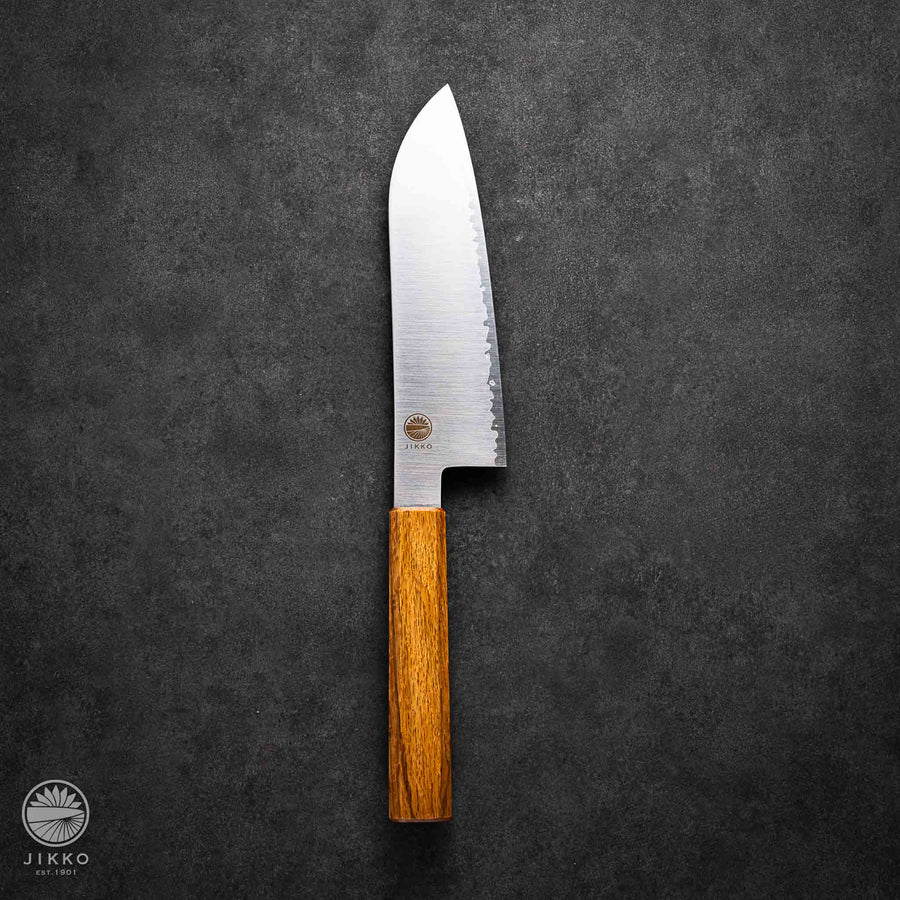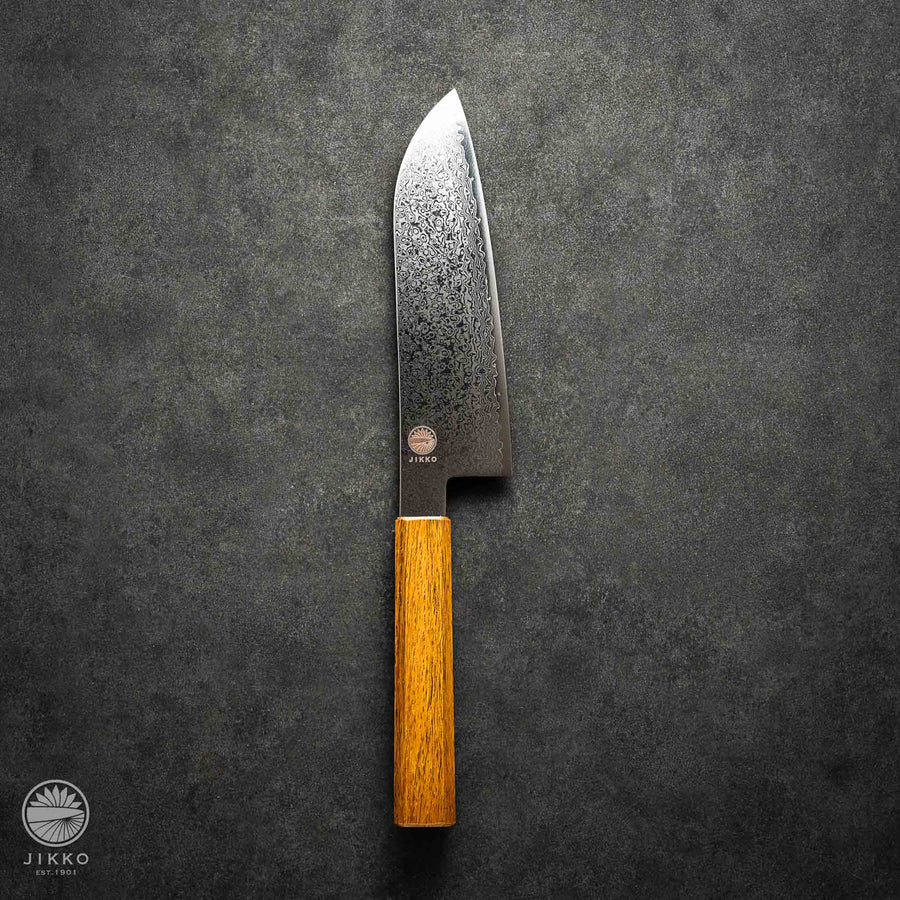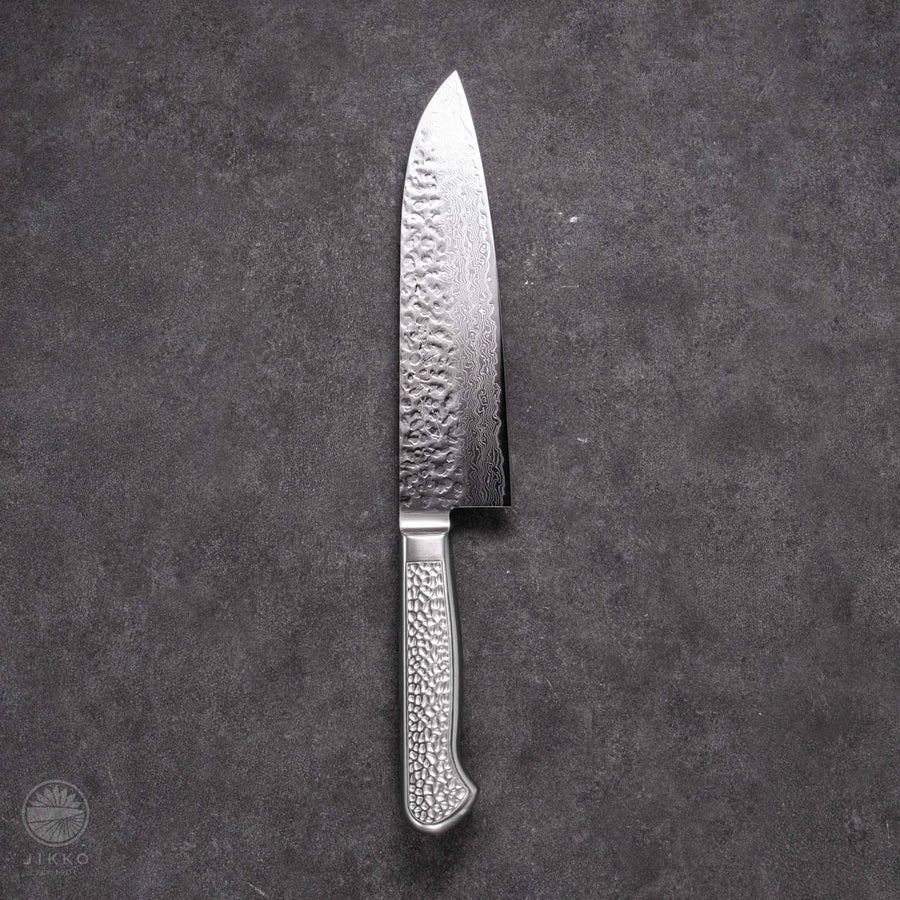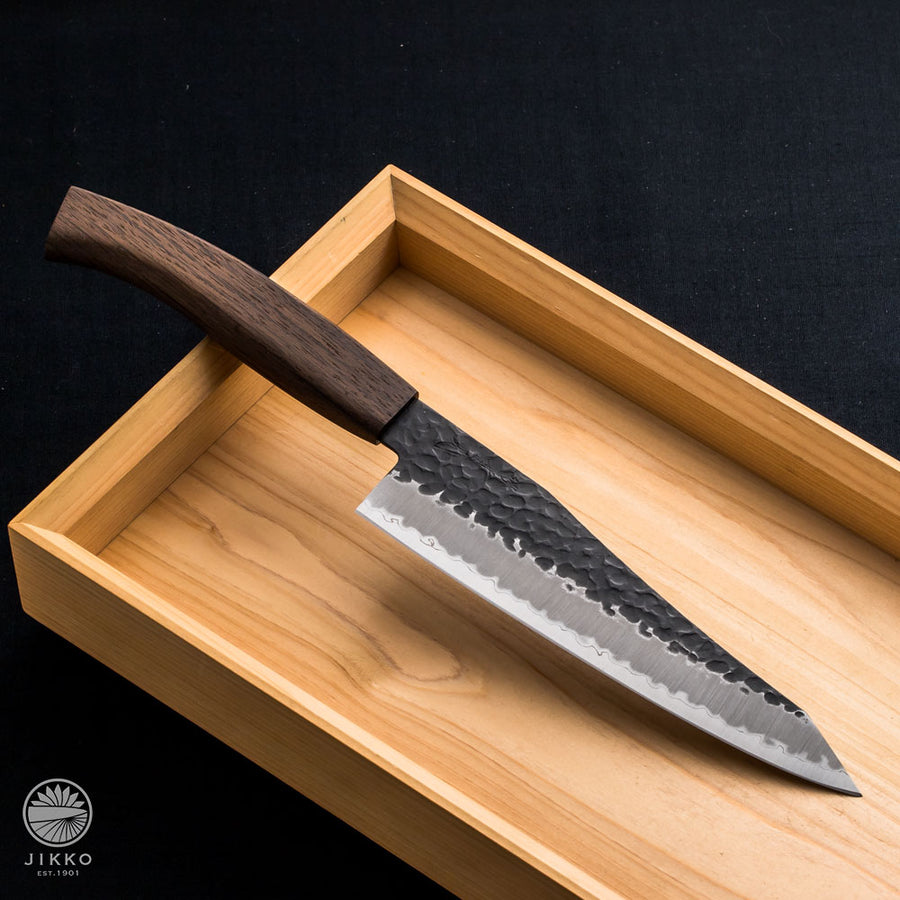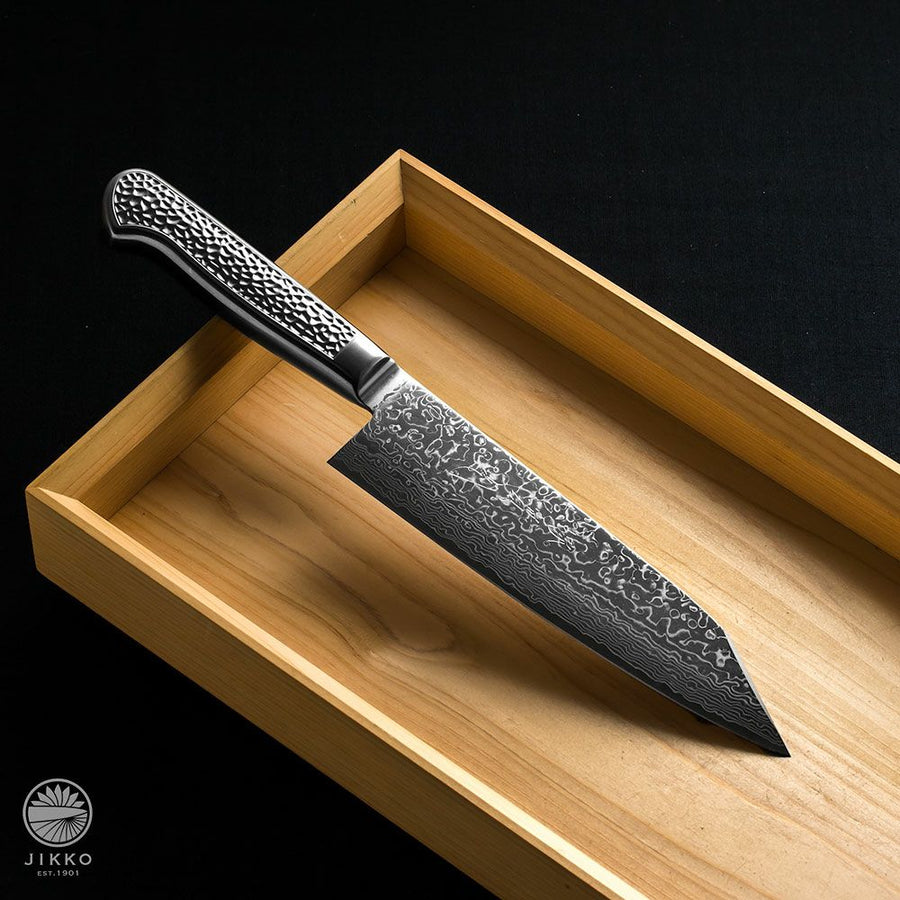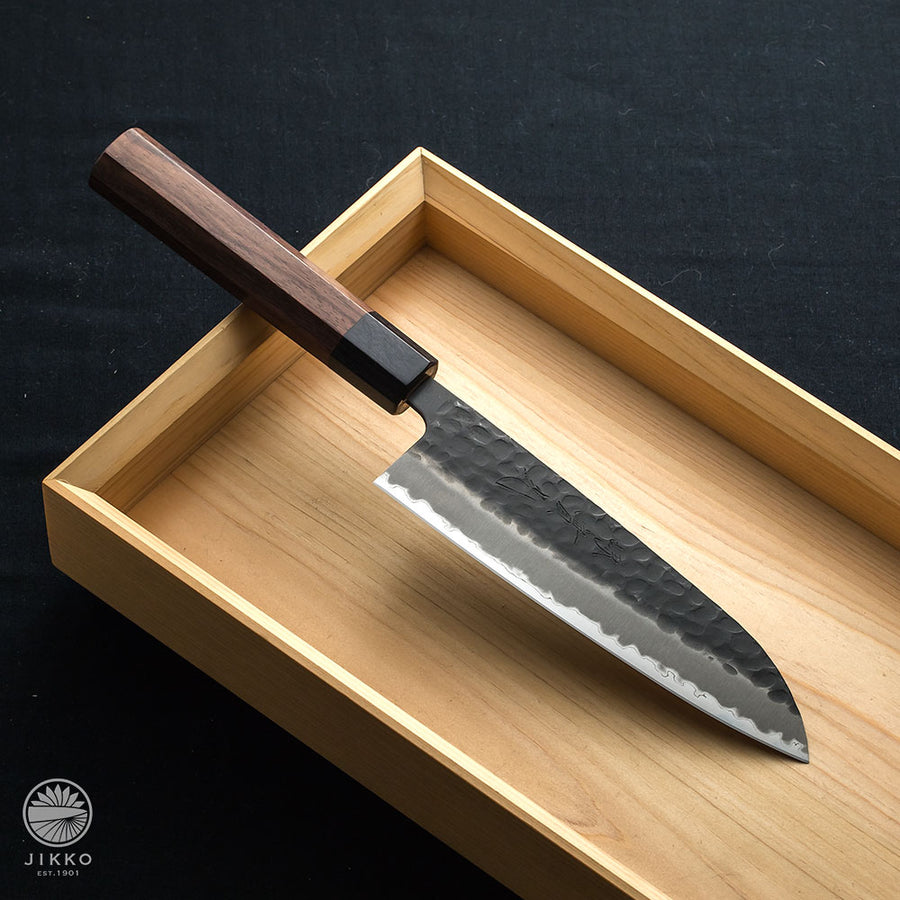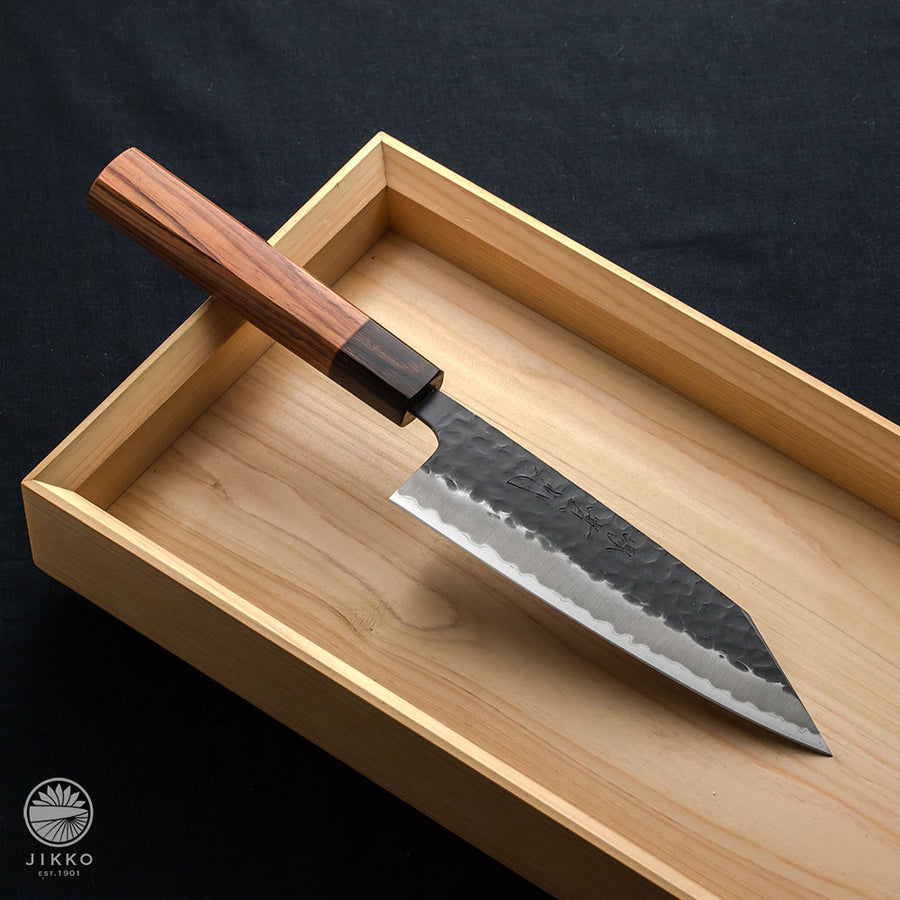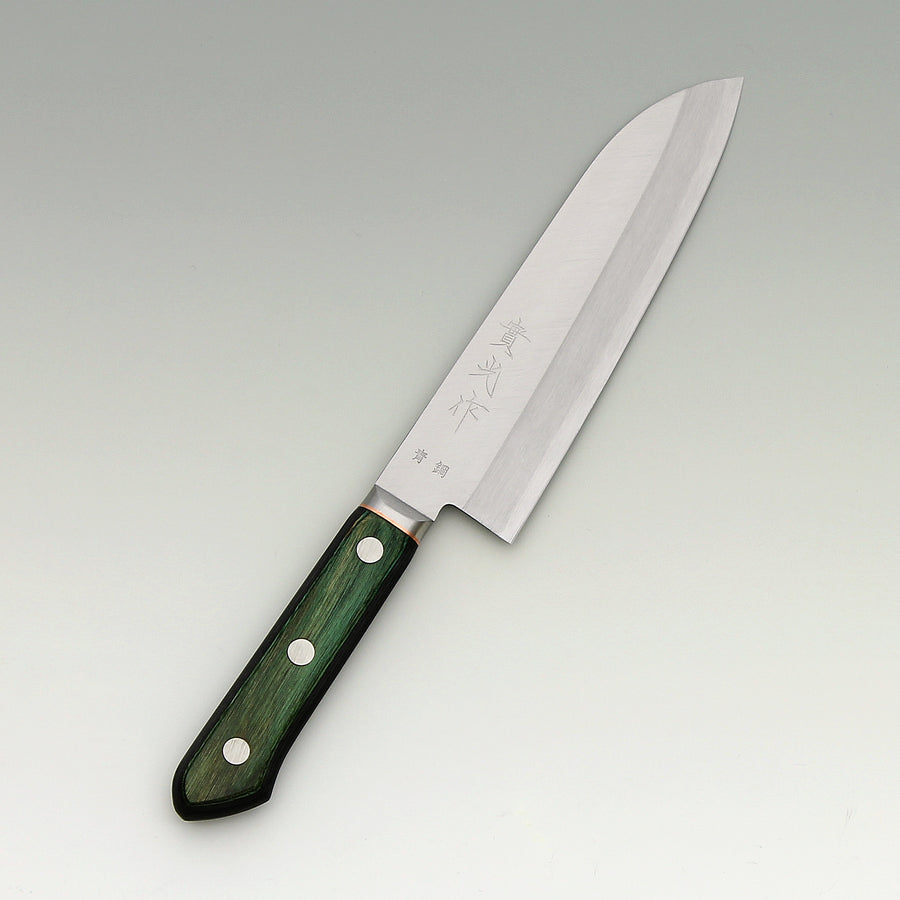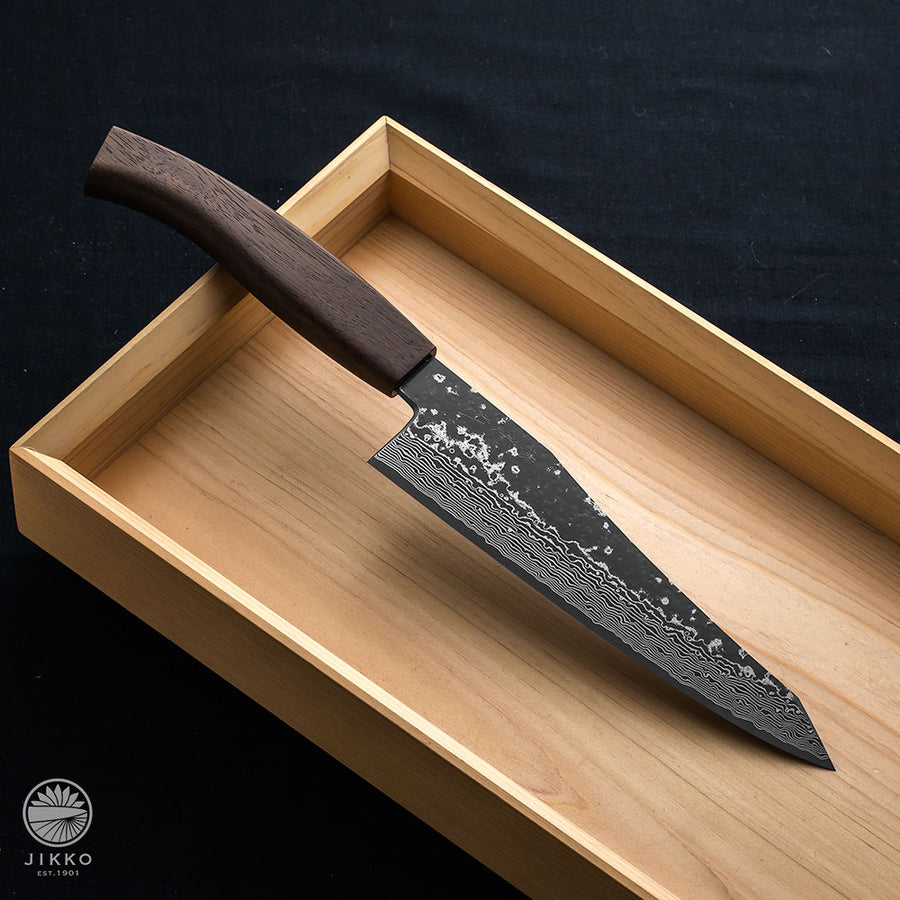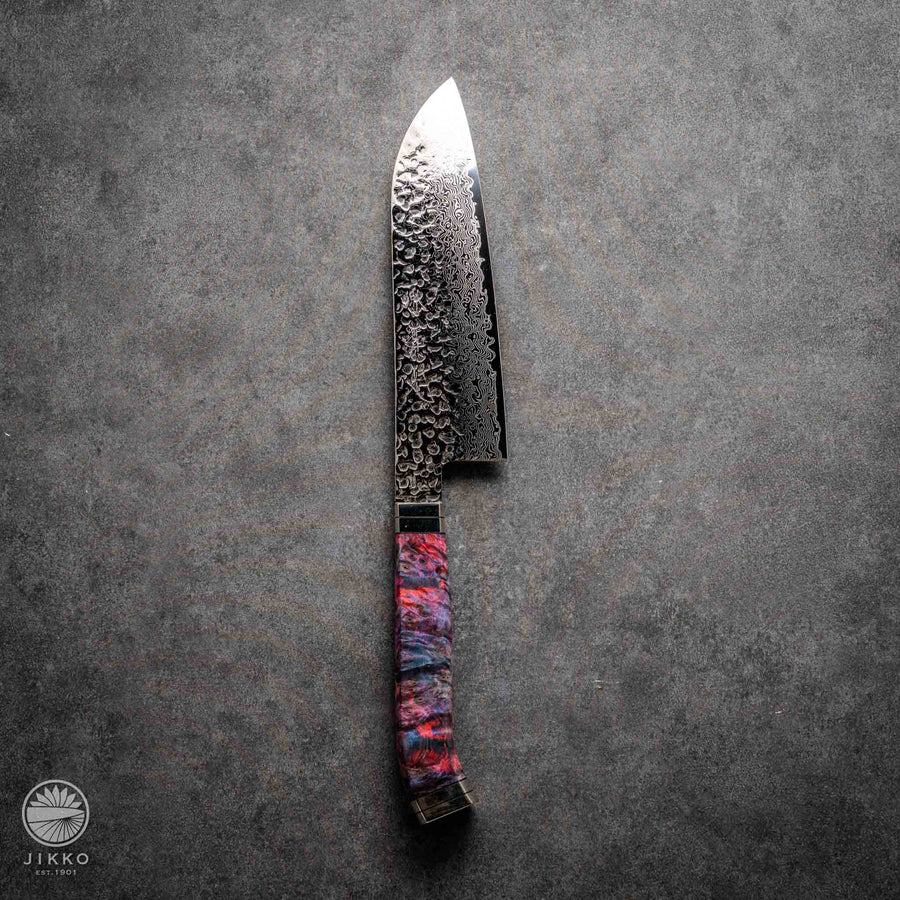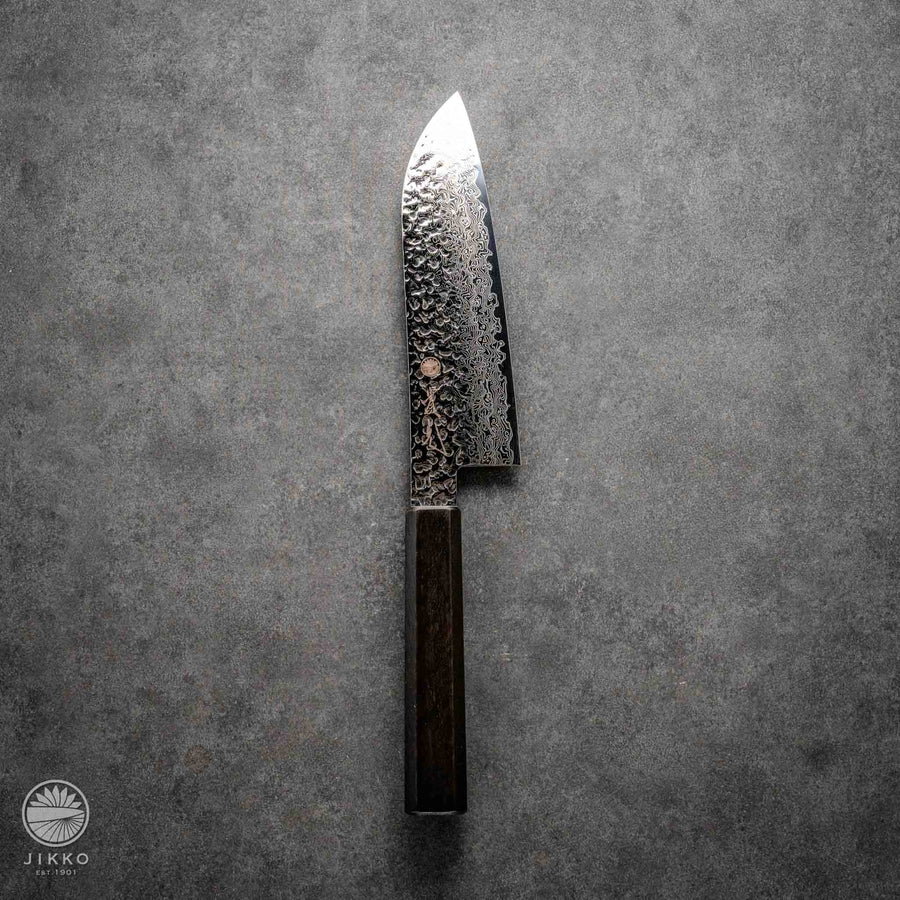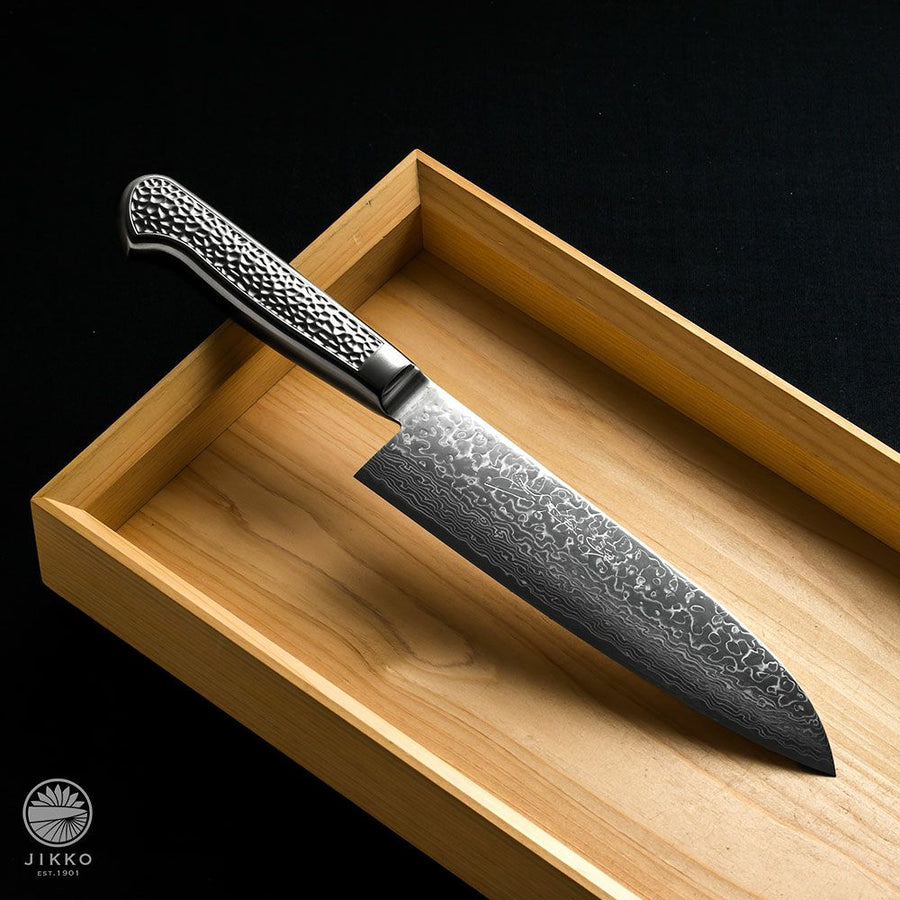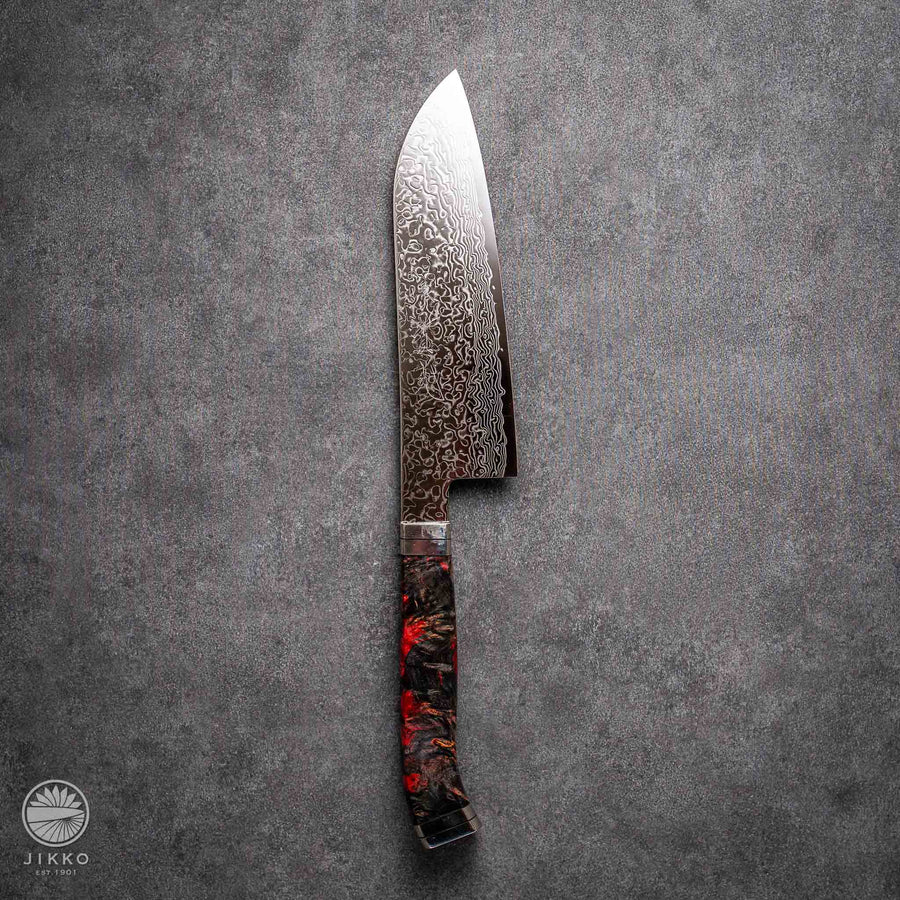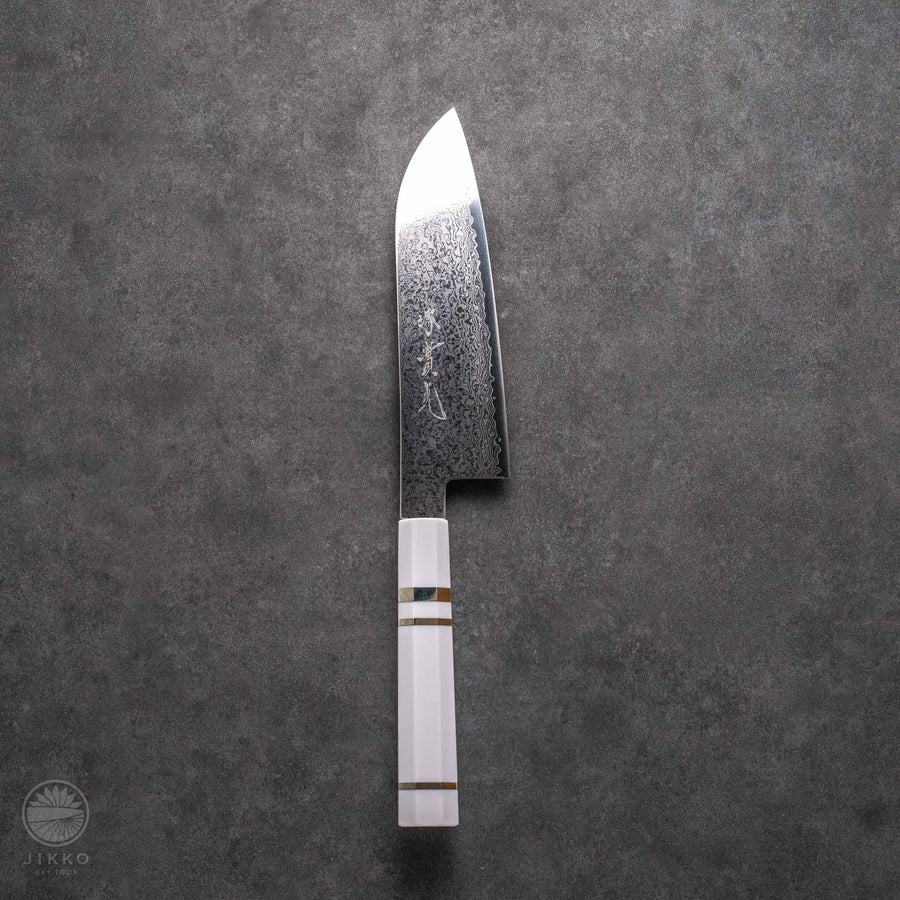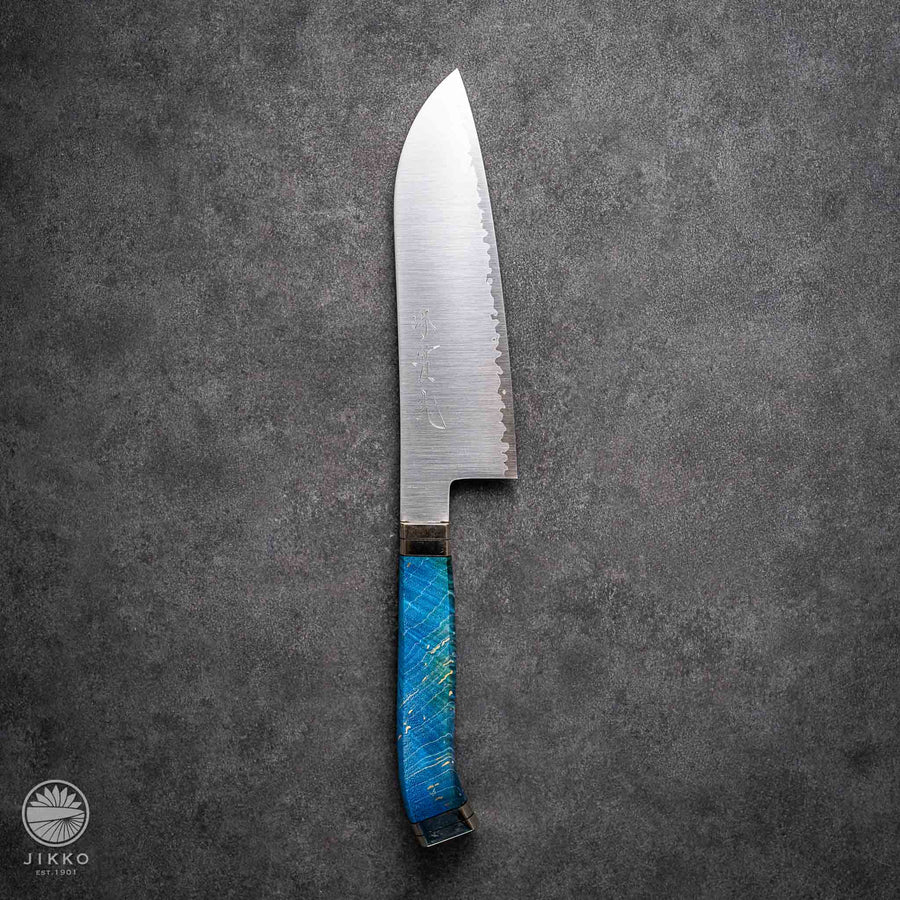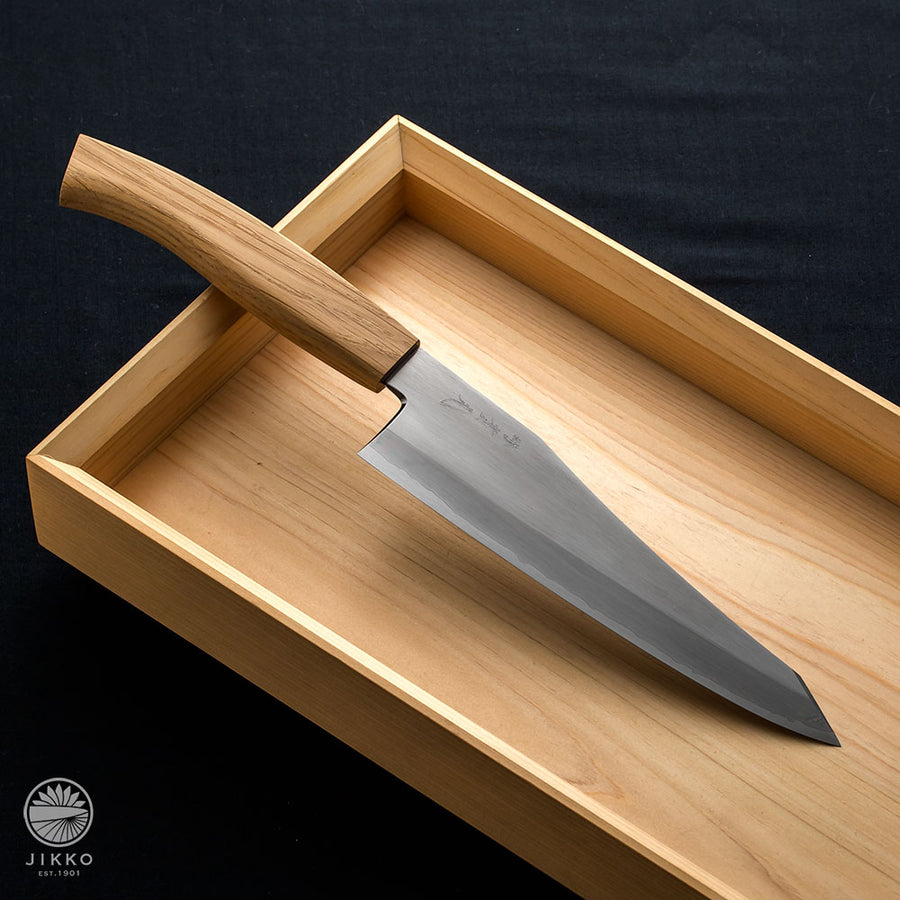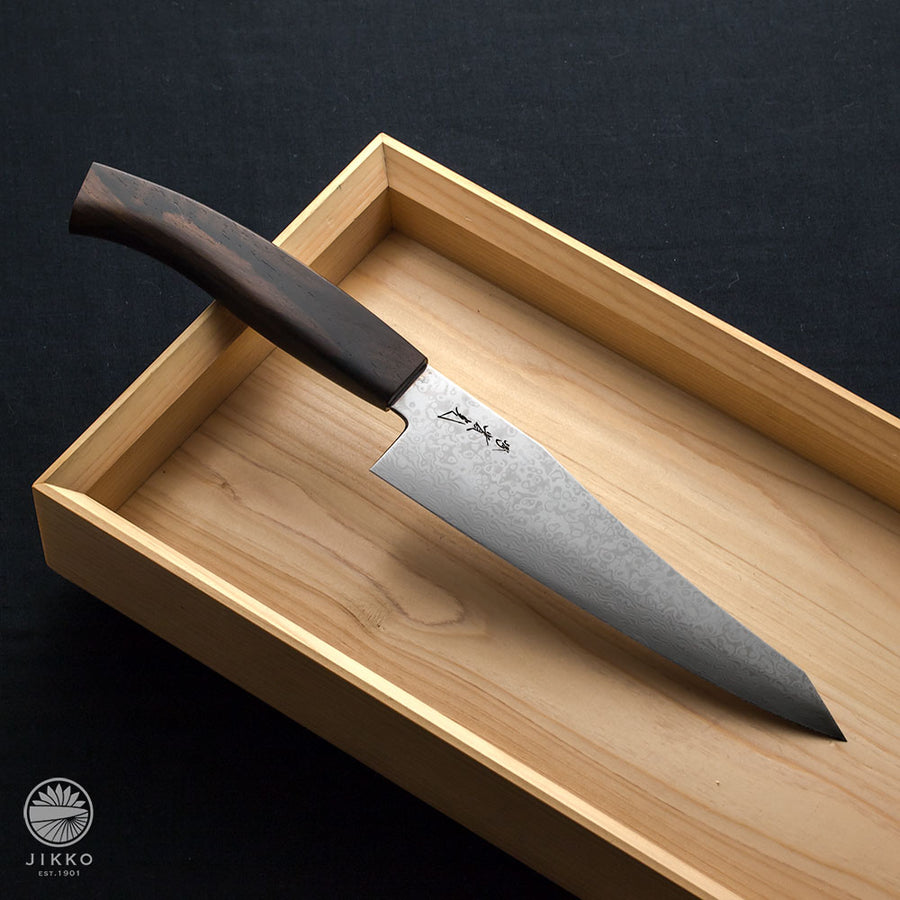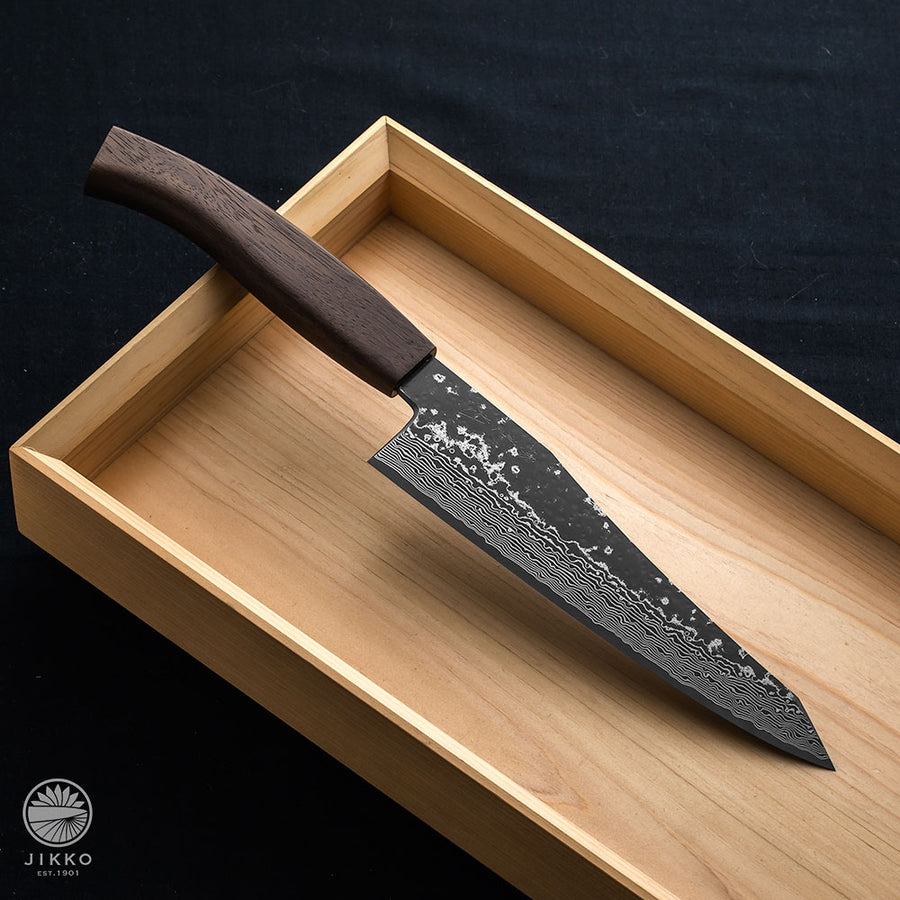A Santoku knife is a versatile Japanese kitchen knife designed for slicing, dicing, and chopping meat, fish, and vegetables.
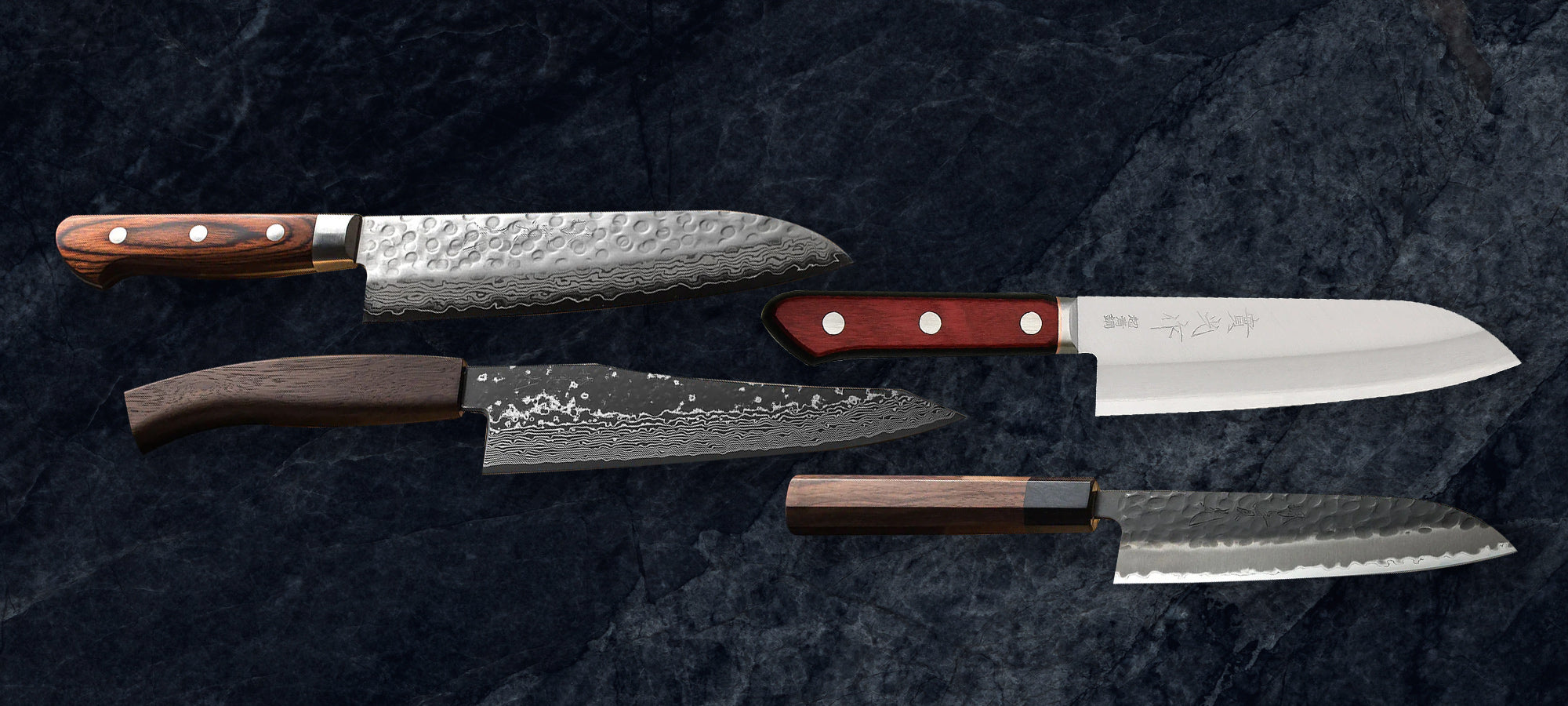
Santoku knives are all purpose knives that are indispensable in Japanese kitchens. They are named "Santoku" because they can cut meat, fish, and vegetables with just one knife. They are 165-180mm in size, have a rounded tip, and are designed to make it easy to cut vegetables that are commonly cooked in Japan, making them easy to use even for beginners.
This is a list of Santoku knives that can be purchased online from Jikko Hamono, a Sakai JIKKO cutlery with over 120 years of history.
Frequently Asked Questions
Features and Uses of Santoku Knives
While both are multipurpose knives, the Santoku typically has a shorter, wider blade with a sheepsfoot tip, making it ideal for precise cuts and a rocking motion. The Gyuto resembles a Western chef's knife with a pointed tip, suitable for a wide range of tasks.
Santoku knives usually have a blade length of around 170mm (6.7 inches), which offers a balance between maneuverability and cutting surface, suitable for most kitchen tasks.
Santoku knives excel in preparing a variety of dishes, including slicing fish for sushi, chopping vegetables for stir-fries, and cutting meats for stews.
Proper Usage of Santoku Knives
Grip the handle firmly with your three fingers, placing your thumb and index finger on the blade's spine for control and precision.
Utilize a forward and downward motion, allowing the knife's sharp edge to slice through the vegetables effortlessly.
Yes, the Santoku knife is designed to handle meat and fish efficiently, providing clean cuts without tearing the flesh.
Ensure the blade is sharp, and use a steady, controlled motion, guiding the knife through the food with minimal pressure.
Maintenance of Santoku Knives
Use a whetstone, maintaining a 15-20 degree angle, and evenly sharpen both sides of the blade to achieve a razor-sharp edge.
Depending on usage, it's advisable to sharpen your knife every 1-2 months to maintain optimal performance.
After each use, wash the knife thoroughly, dry it immediately, and store it in a dry place. Applying a light coat of vegetable oil can also help prevent rust.
It's recommended to hand wash your Santoku knife to preserve its sharpness and prevent potential damage from dishwasher detergents and high heat.
Choosing the Right Santoku Knife
Stainless steel blades are ideal for beginners due to their resistance to rust and ease of maintenance.
Quality Santoku knives can range from $100 to $300, depending on the materials and craftsmanship.
Professional Santoku knives often feature higher-grade steel and superior balance, catering to the demands of frequent use, whereas home-use knives prioritize comfort and affordability.

